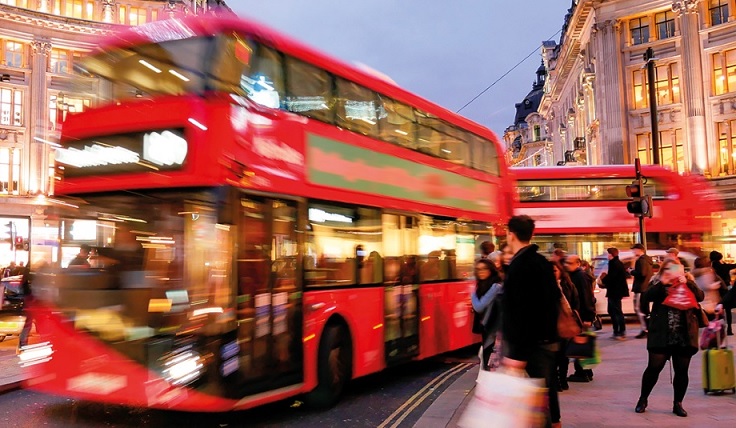Payments lie at the heart of every form of travel, and will continue to become more integral as more cities move to contactless public transportation, digital payments for parking and rental services such as bikes or scooters, according to The Future of Transportation: Mobility in the Age of the Megacity, a new study conducted by Visa in collaboration with Stanford University.
Mike Lemberger, SVP, Product Solutions Europe, Visa explains: “The future success of our cities is intertwined with – and reliant on – the future of transportation and mobility. Visa and our partners have an important role to play, both in streamlining the payment experience for millions of commuters around the globe, and supporting public transportation authorities in their quest to build sustainable and convenient transportation solutions that improve the lives of the people who use it.”

Herman Donner, PhD and Postdoctoral Researcher from Stanford University co-authored the report and summarized: “When looking across the technology landscape, there already exist many products that could easily address people’s daily frustrations with travel. However, none of these solutions should be developed in isolation. A major challenge therefore lies in first identifying relevant technologies that provide suitable products for the market then managing implementation in conjunction with a broad set of stakeholder including mobility providers, technology companies, infrastructure owners and public transport agencies. From our research, we think that many of these small, incremental changes have the potential to make a significant difference in people’s daily travel, whether it’s to help find parking, get the best price to refuel their car or plan their journey on public transportation.”
The following are report highlights:
Commute times
■ 46 percent of consumers globally have seen commuting times increase.
■ Half (52 percent) are frustrated with the experience of using public transport.
■ One third of those surveyed (37 percent) expect that their commuting time will increase over the next five years.
Car use
■ The personal car remains the top mode of transport for both commuting (60%) and personal travel (61%).
■ Only 42% of Generation Z (aged 18-25) respondents use a car to get to work, school or university, or for personal travel.
■ The most disliked aspect of driving is attempting to find a parking space, cited by 64% of respondents, followed by the risk of getting a fine if you park longer than anticipated (44%) and paying more for parking time than needed (42%)
Public transport use
■ Less than half of people surveyed use public transport as a way to get to work, school or university (44 percent).
■ That number rises to 54 percent for personal travel such as entertainment.
■ Commuters choose transportation type based on three factors: convenience, reliability and overcrowding. Importance of each factor differs depending on age:
- Baby Boomers (age 56+) - Convenience (82 percent), Reliability (84 percent) and Overcrowding (72 percent)
- GenX (46-55) - Convenience (79 percent), Reliability (82 percent) and Overcrowding (71 percent)
- Millennials (26-45) – Convenience (74 percent), Reliability (76 percent) and Overcrowding (67 percent)
- GenZ (18-25) - Convenience (62 percent), Reliability (67 percent) and Overcrowding (55 percent)
Payments
■ Complexity in payment is often at the root of many common complaints.
■ If it was easier to pay for public transport, average use would increase by 27 percent.
■ 47 percent said the need for different tickets for different modes of travel is an issue.
■ 44 percent said not knowing how much to pay is a problem.
■ 41 percent cited services being “cash-only” as an annoyance. According to those surveyed, these frustrations make them less likely to use public transport and more likely to drive their own cars.
■ For car users, 47% would like to see innovations that would advise on the cheapest fuel available.
■ 35% would like an app that recognizes the location where they are trying to refuel and pays through the app.
Visa also offered 5 recommendations:
1. Invest in connectivity
City governments needs to invest in an “always on” data infrastructure, which is fundamental to the technology solutions that consumers demand. It supports real-time data exchanges that can inform people about their journey as well as provide insight for cities to ensure that services meet shifting demand.
2. Create a seamless payment experience to support commuter journeys with multiple “legs”
City governments and urban planners need to collaborate with think tanks, automotive and technology firms, and payments providers such as Visa. As a single journey will increasingly involve more than one mode transport (e.g., car+underground+bike) – it becomes imperative to create a simple, streamlined payment experience for the commuter, ranging from contactless transit to in-app payments or platform-based solutions.
3. Integrate personal authentication into the payment experience
As companies and municipalities increasingly incorporate digital payments, they also need to integrate instant authentication. The role of Digital ID in the ecosystem is critical to address the changes in the way people use transportation, ensuring that both payment and personal authentication is easy and seamless.
4. Design commerce systems with all members of society in mind
When designing the commerce ecosystem, all members of the transportation ecosystem need to challenge their thinking to include seniors and the un- or underbanked, ensuring no one is left behind.
5. Develop strategic partnerships to drive insights
Cities should partner with corporations that can broader insight, aiding in planning. Artificial Intelligence in combination with Big Data can be used to analyse data about consumption, movement and changing trends to anticipate needs in real time as well as provide cities with insight that can help with future planning.
Methodology: The study reflects the feedback of 19,000 consumers in 19 countries.




